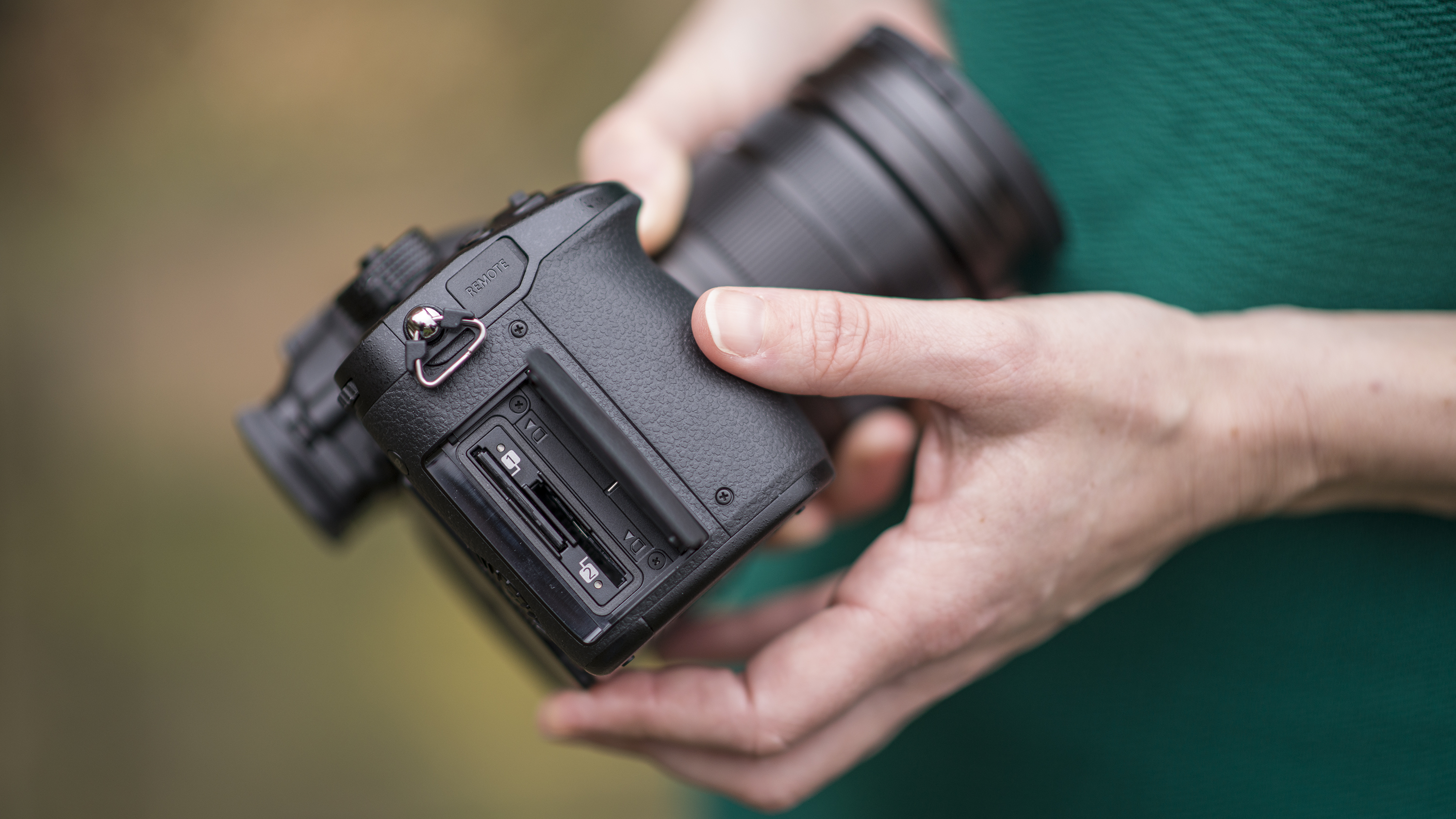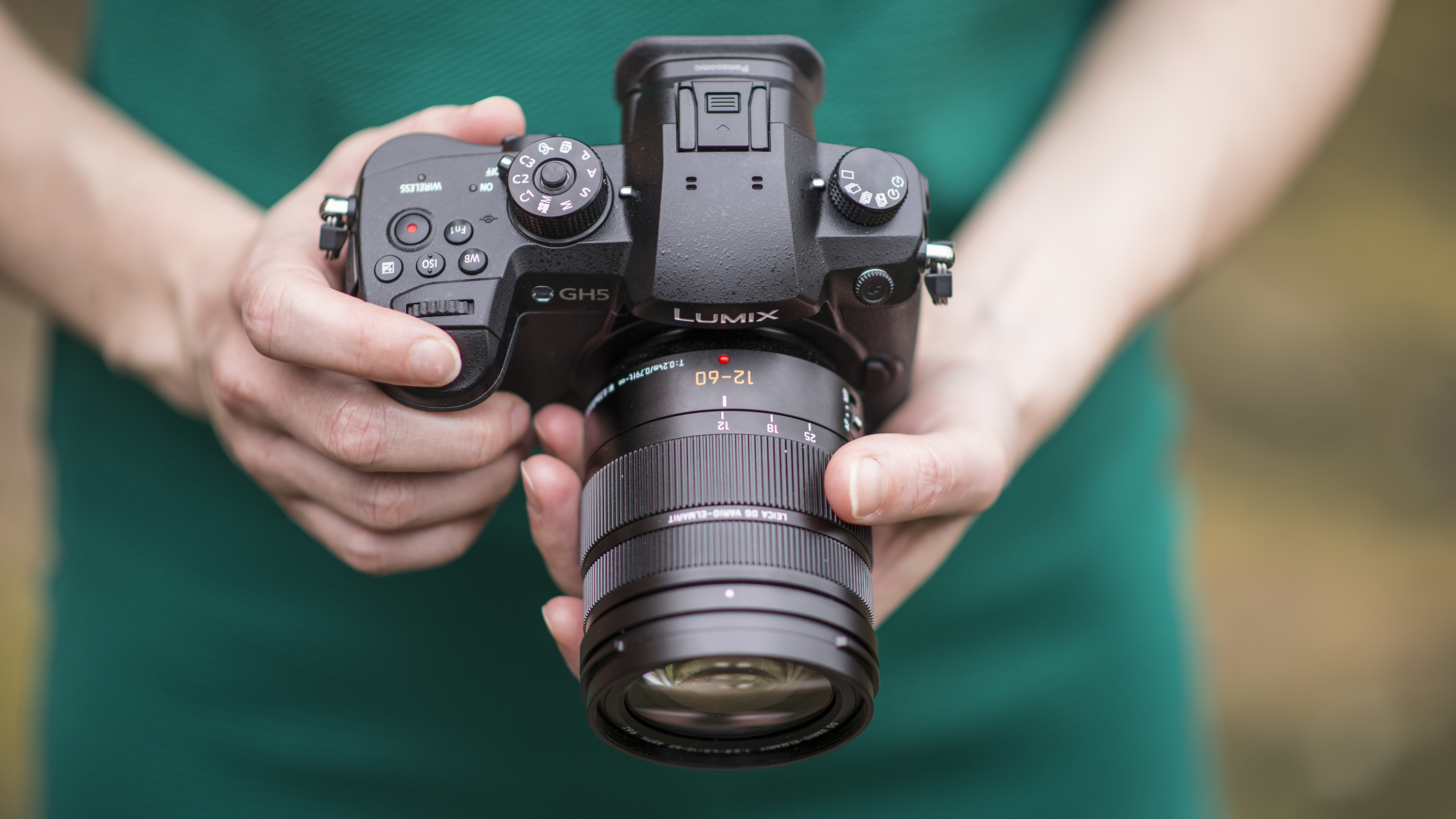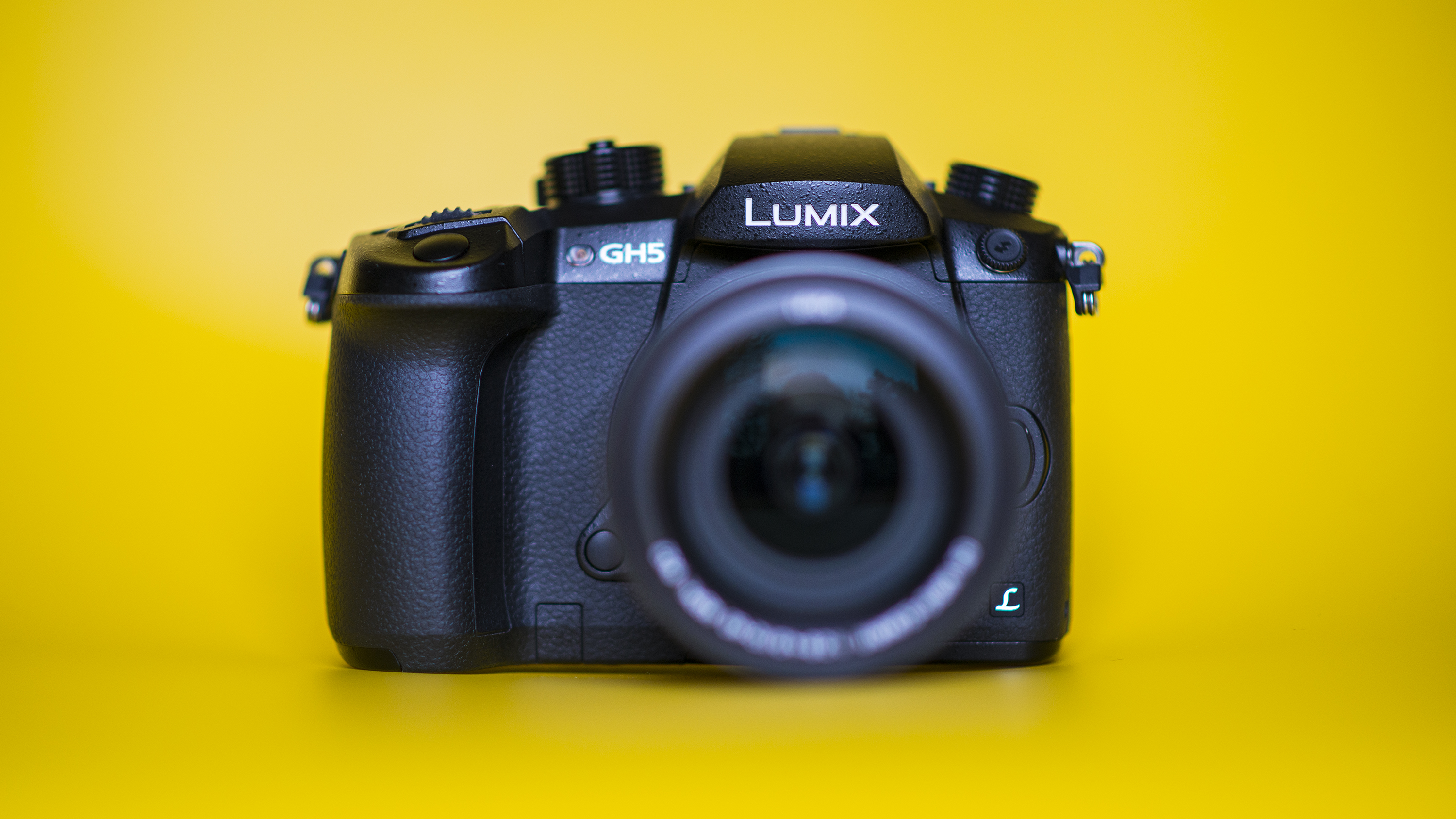Why you can trust TechRadar
Build and handling
- Magnesium alloy body
- 13% bigger than the GH4
- Freeze-proof to -10 Celsius
While part of the initial ethos of mirrorless cameras was that they be smaller than their DSLR counterparts – and that's been particularly true for Micro Four Thirds models in the past – the Panasonic Lumix GH5 is actually some 13% larger than the GH4.
This may seem a somewhat retrograde step, but we think the Lumix GH5 is all the better for it. Panasonic has done away with the built-in flash we saw on the GH4 (something Nikon's recently done with the D500 as well), and this design tweak, combined with the magnesium alloy chassis and large, purposeful handgrip, means the GH5 feels every inch the high-end professional piece of kit it's meant to be. It really is a nice camera to pick up and shoot with.




The GH5 is also fully weather-sealed, and freeze-proof down to -10 degrees Celsius, while the heat-dispersing design means you're unlimited in your video recording time – you'll only be restricted by the capacity of your storage media. Speaking of which, the GH5 features dual SD card slots with UHS-II support, while it also gains a full-sized HDMI Type A terminal.
Panasonic has also overhauled the shutter. It's rated to 200,000 cycles just as on the GH4, but there's a new spring drive, with a floating construction for the shutter frame. What does this mean? It should see a reduction in the shock to the camera body by one-sixth when the shutter is fired.
The inclusion of an intuitive touchscreen hasn’t stopped Panasonic littering the Lumix GH5 with a wealth of buttons and controls to enable you to quickly toggle key features. There’s no LCD display on the top plate, but either side of the pentaprism are chunky drive and mode dials, while just behind the front command dial are buttons to access White Balance, ISO and exposure compensation.
The nice touch here is that all three buttons are finished slightly differently – the White Balance button is convex-shaped, the ISO one is flat with two little dimples on it
The nice touch here is that all three buttons are finished slightly differently – the White Balance button is convex-shaped, the ISO one is flat with two little dimples on it, and the exposure compensation button is concave. This means that when you have the camera raised to your eye you should know which of the three controls you’re accessing just by feel.
Sitting behind these are a programmable function button and a dedicated movie record button, which has worked its way up from the rear of the GH4 to the top here.
Sign up for breaking news, reviews, opinion, top tech deals, and more.
Where the movie record button used to sit on the GH4, there's now a small multi-directional joypad on the Panasonic GH5 – this is used primarily to select your AF area (if you're not using the touchscreen), but it can also be used to navigate the GH5's menus.
The menu system has been tweaked too. The number of items on each page has increased from five lines to eight, so you can see more information with less scrolling, while Panasonic has re-designed the order and position of each menu item; this could cause GH4 users who are upgrading some initial frustrations when they start shooting, but the menu is a lot clearer, while frequently used items can be stored in the GH5's 'my menu'.
Autofocus
- 225-area AF system
- Customized AF settings
- Motion tracking built into the system
As you'd expect, the Panasonic Lumix GH5's AF system has seen quite a jump from the one in the three-year-old camera it replaces, to a 225-area system that covers the vast majority on the frame.
As well as Multi AF, there's also a Custom Multi mode that enables you to freely select the AF-area group, or Zone AF, where the focus area group size and position can be customized.
Users can also set up four different profiles with adjustable sensitivity, AF area switching sensitivity and moving object prediction, depending on the type of subject they're intending to shoot – interestingly the GH5 now has motion-tracking built into the system.
Focusing speed has also been improved compared to the GH4's 0.07 sec – the Lumix GH5 focuses at 0.05 secs, with the Venus Engine now processing information at 480fps.
In use, AF performance is very brisk – paired with the new 12-60mm f/2.8-4 Leica lens the GH5 quickly and silently locked onto subjects under a range of lighting conditions (the GH5 can focus down to minus -4EV) without hesitation.
With the GH5's uprated DFD (Depth from Defocus) autofocus technology on board as well we found the camera's tracking performance to be very good, happily following fairly fast-moving subjects in our tests.
Current page: Build, handling and AF
Prev Page Introduction and key features Next Page Performance and image quality
Phil Hall is an experienced writer and editor having worked on some of the largest photography magazines in the UK, and now edit the photography channel of TechRadar, the UK's biggest tech website and one of the largest in the world. He has also worked on numerous commercial projects, including working with manufacturers like Nikon and Fujifilm on bespoke printed and online camera guides, as well as writing technique blogs and copy for the John Lewis Technology guide.
